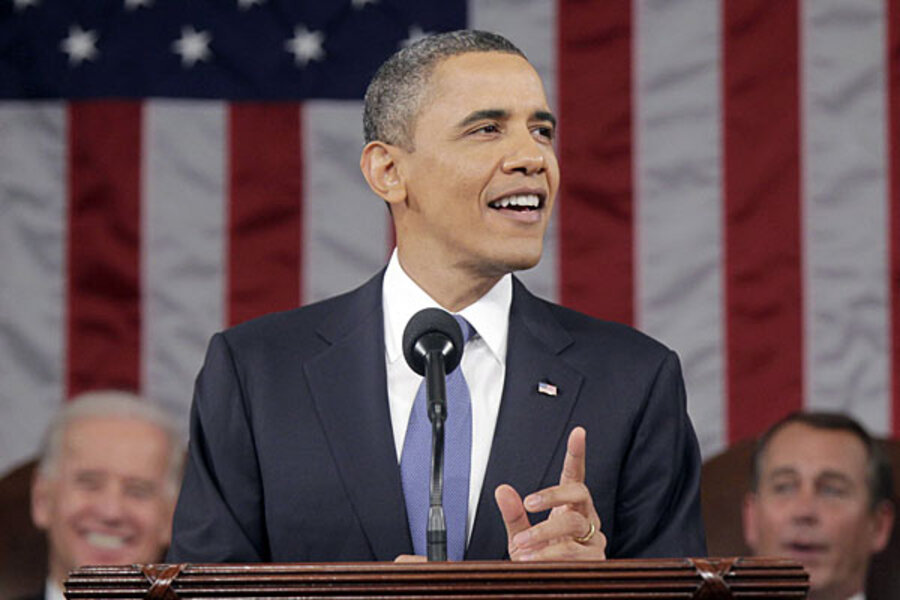High-speed wireless access for entire US will spark innovation, Obama says
Loading...
| Chicago
Emphasizing a goal he set out in his State of the Union address, President Obama promoted a plan Thursday for 98 percent of Americans to have high-speed wireless Internet access within five years.
In remarks given at Northern Michigan University in Marquette, Mr. Obama said his proposal, titled the National Wireless Initiative, would boost small-business development and would be of particular use in rural areas. He likened high-speed wireless access to the transcontinental railroad, which united both coasts of America.
“This isn’t just about faster Internet or being able to find a friend on Facebook. It’s about connecting every corner of America to the digital age,” he said.
The idea behind the plan is that high-speed wireless access may be more feasible than the creation of broadband networks in some areas of the United States, especially rural places. (Republicans and others may still balk at the costs, however.)
With high-speed wireless access, users don’t need a full-fledged computer to connect to the Internet, but instead can use smart phones or tablets.
“For our families and our businesses, high-speed wireless service, that’s the next train station. It’s the next offramp,” Obama said. “It’s how we’ll spark new innovation, new investment, new jobs.” Mr. Obama has focused on innovation and job themes in 2011.
The plan he talked about Thursday revolves around raising $27.8 billion in funds from the auction of 500 megahertz of public, wireless airwaves. Also called spectrum, the airwaves would be sold to commercial wireless carriers.
The money from the auction would be used to create a $5 billion fund, which would develop a 4G wireless network in rural areas. Also, $10.7 billion would be invested to create a wireless network for exclusive use by public-safety agencies. An additional $3 billion would be used to create incentives for research and development of emerging wireless technologies.
Those three plans are expected to be part of Obama’s fiscal 2012 budget, due for release Monday.
The leftover money from the auction – almost $10 billion – would be put toward reducing the federal deficit.
Critics say that by opening up public airwaves to auction, the administration is primarily giving a free gift to the telecommunications industry, namely Verizon and AT&T.
According to S. Derek Turner, research director of the Free Press, a nonprofit media advocacy group based in Washington, the real issue hindering rural America is not necessarily access, but rather affordability, which Obama’s framework does not address.
“It does raise a lot of questions why the federal government would subsidize private industry that will turn around and gouge private consumers,” Mr. Turner says. “We’re not [advocating] for rate regulation, [but] we should be asking questions about what the government should do to ensure these services are affordable.”
Of the top 25 countries with broadband access, the US ranked 11th in 2008 in terms of the average monthly subscription price, according to Free Press data.
Turner proposes that if the cost of broadband in the US is to remain high, the relevant companies should be required to “be good public stewards” and foot the bill of the infrastructure, from cell towers to fiber-optic cables.
Sixty-six percent of American adults have a home broadband connection as of late 2010, reports the Pew Research Center’s Internet & American Life Project. Among those who don’t have a connection, the issue is not necessarily economics.
“There’s a certain group of people who don’t have broadband that say, ‘I don’t need it’ and ‘it’s not something that interests me,’ ” says Aaron Smith, senior research specialist with Pew.
The Pew report also indicates that more than half of online users (53 percent) and slightly less than half of nonusers (48 percent) don’t believe that affordable broadband should be a government priority.
The Obama initiative is an extension of the $7.2 billion that the administration allocated in federal stimulus funds for research related to expanding the nation’s broadband access.





